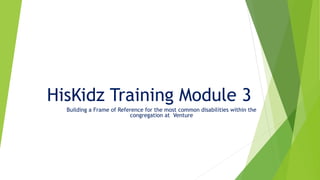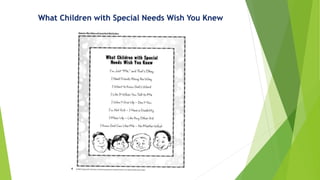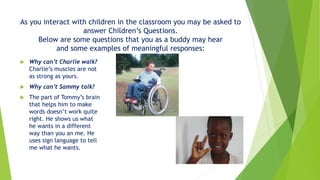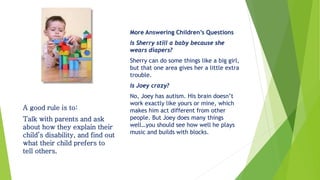This document provides information to help volunteers at Venture Church build understanding of common disabilities within the congregation. It discusses autism, ADHD, Down syndrome, hearing and visual impairments, being medically fragile, and developmental delays. For each disability, it provides brief descriptions of symptoms and challenges, as well as etiquette tips for interacting with children who have them. The most common disabilities at Venture are listed as autism, ADHD, Down syndrome, hearing impairment, visual impairment, medical fragility, and developmental delays.













